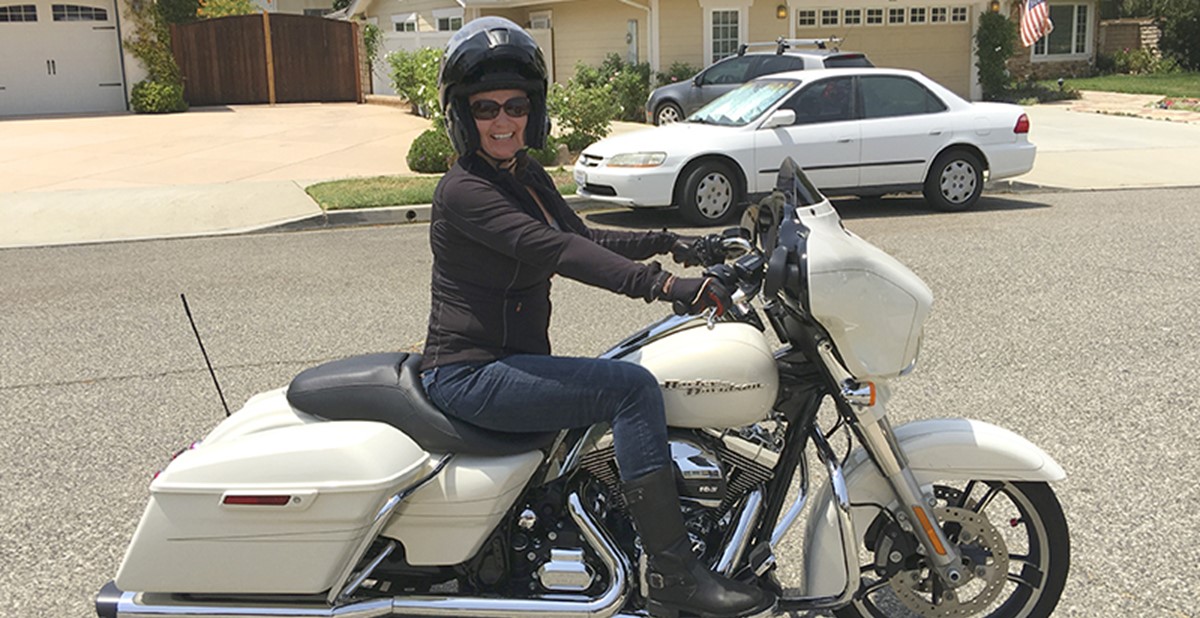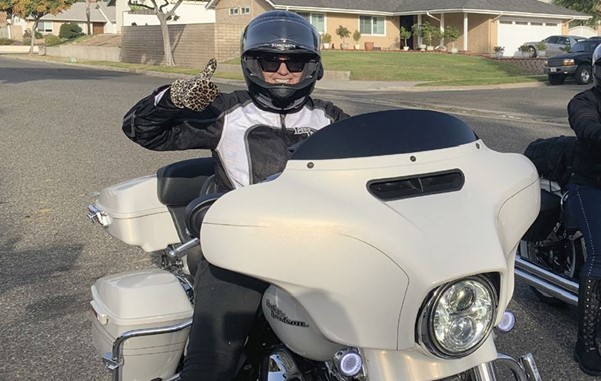Day In The Life: Committed To The Cause

Missy Kilpatrick, CAS, is an avid Harley-Davidson enthusiast. The vice president of business development at Delray Beach, Florida-based supplier The Book Company is also a lover of journals, which is her area of expertise in the promotional products industry. But together, these interests share something even greater: Kilpatrick’s experience with philanthropic involvement.
Over Kilpatrick’s nearly 25 years in the industry, she has found a way to engage in her passions while bettering the environment and the greater community. As a promotional products professional, she is responsible for all-things journal-related—along with product development and design, and seeking out large, custom orders. She proposed the “We Plant Trees” program to Doug Greenhut, president of The Book Company, who formed a partnership between the supplier and American Forests, a nonprofit founded in 1875 that has, thus far, planted 7.5 million trees across the country. Every year, a portion of The Book Company’s proceeds help fund the organization’s efforts.
As a motorcyclist, Kilpatrick is a member of the Chrome Divas, Inc., a nonprofit female-only organization of riders, passengers and some non-riding women, who enjoy the camaraderie and participating in charities, namely those serving women and children. The organization, which was founded in Tallahassee, Florida, has grown to more than 45 national chapters and some 700 members, and has raised funds for a long list of charities, like the MAGIC Foundation, St. Jude Children’s Research Hospital, Pets for Vets, The Backpack Foundation, the Dragonfly Foundation and The Jewish Hospital’s mobile mammogram.
At first glance, it may seem that Kilpatrick’s proposition for the “We Plant Trees” program has one, albeit crucial, benefit: helping the supplier, which specializes in paper products, to serve the community. This is true, indeed, but the benefits of corporate giveback for companies are actually twofold. First, there’s the impression it leaves on clients and end users. According to PPAI’s 2019 Consumer Study of 3,000 end users ages 18-78, sustainability is key when selecting products that end users will keep, and 12 percent of all end users will pass on or discard promotional products they know are harmful to the environment. When distributors and end users purchase from suppliers that work with charities like The Book Company, says Kilpatrick, the purchase is a “feel-good” one with “excellent response.”
 Next, there’s the layer of value that philanthropy yields for the community. Kilpatrick, who resides in Simi Valley, California, has seen the devastating effects of the wildfires. According to the U.S. Forest Service, there have been more than 5,487 fires recorded in California State this year, destroying some 157,923 acres of land. By contributing to the cause, anyone who purchases or receives products manufactured by The Book Company are essentially helping rebuild burnt forestland; a fact that will certainly resonate with end users.
Next, there’s the layer of value that philanthropy yields for the community. Kilpatrick, who resides in Simi Valley, California, has seen the devastating effects of the wildfires. According to the U.S. Forest Service, there have been more than 5,487 fires recorded in California State this year, destroying some 157,923 acres of land. By contributing to the cause, anyone who purchases or receives products manufactured by The Book Company are essentially helping rebuild burnt forestland; a fact that will certainly resonate with end users.
PPB spoke with Kilpatrick to learn more about her experience and dedication to philanthropy.
PPB Can you tell us about your experience in the promotional products industry?
Kilpatrick My 25 years in the industry has been a fabulous journey into the world of dated products and journals, and what a ride it has been. During the earlier part of my career, I was the executive vice president of Castelli North America, where I immersed myself in the world of paper products. I joined The Book Company in 2012 to help spearhead the company’s expansion into journals. In addition to developing our stock line of journals, I helped launch a custom solutions program that partners with distributors and their clients to develop 100-percent custom solutions, produced both domestically and overseas. I have been lucky enough to have earned several top sales awards. I have also served on the Board of Directors for both the Promotional Marketing Association of California and Specialty Advertising Association of California (SAAC), and I was the president of SAAC in 2008.
PPB What inspired you to suggest a corporate giving program?
Kilpatrick This is something I am very proud of, and really pleased that Doug Greenhut was able to form a partnership with American Forests. Quoting Doug, “It’s truly impossible to weigh the balance between the majesty of trees and their importance to our ecosystem against the immeasurable educational value we gain from reading books and writing in journals.” That’s why the We Plant Trees program to support American Forests’ reforestation programs makes so much sense. Books, journals, paper and trees are all interconnected. We recognize the impact that the books and journals we sell have on trees and on our environment, so we wanted to take positive action so that future generations can enjoy the benefit of books and journals, too.
PPB Tell us about Chrome Divas.
Kilpatrick As I mentioned previously, I am an avid Harley-Davidson enthusiast. I ride a 2015 Harley-Davidson Street Glide Special and belong to a national group of likeminded women called Chrome Divas, Inc. This group was created to provide a means of camaraderie, community participation and a national link to all women who ride motorcycles. Through the diverse sisterhood of the Chrome Divas, our mission is to build a positive image of women motorcyclists and enthusiasts, promote motorcycle safety, elevate the consciousness of automobile drivers, create awareness of women and children’s issues while giving back to our communities, and most importantly, to ride and have fun. There is nothing like riding a motorcycle with your friends.
PPB What are three core suggestions you’d give to companies in the promotional products industry looking to partner with a nonprofit or become involved in philanthropy?
Kilpatrick Make sure the cause aligns with your company’s core beliefs, truly engage in the giveback aspect of the partnership and be sure there is a way to measure success so employees can feel good about what the company is doing.
PPB How can promotional products companies encourage clients, end users and even competitors to get more involved?
Kilpatrick Talk about your program and your successes in all areas of your communications. Through your website, social media, email and newsletters, press releases, podcasts, speaking engagements and more. Offering incentives to participate might also work.
–––––––––––––––––––––––––––––––––––––––––––––––––––––––––––
Where Do The Donations Go?
A myriad of industries benefit from charitable organizations. According to the Giving USA Foundation’s annual report on philanthropy, 2018 Giving USA, here was the breakdown in 2017:
- 31 percent of all donations, or $127.37 billion, went to religions organizations
- 14 percent of all donations, or $58.9 billion, went to education charities
- 12 percent of all donations, or $50.06 billion, went to human services charities
- 11 percent of all donations, or $45.89 billion, went to foundations
- Nine percent of all donations, or $38.27 billion, went to health charities
- Seven percent of all donations, or $29.59 billion, went to public society benefit charities
- Six percent of all donations, or $22.97 billion, went to international charities
- Five percent of all donations, or $19.51 billion, went to arts, culture and humanities
- Three percent of all donations, or $11.83 billion, went to charities that support the environment and animals
Source: Giving USA Foundation
–––––––––––––––––––––––––––––––––––––––––––––––––––––––––––
Danielle Renda is associate editor of PPB.

